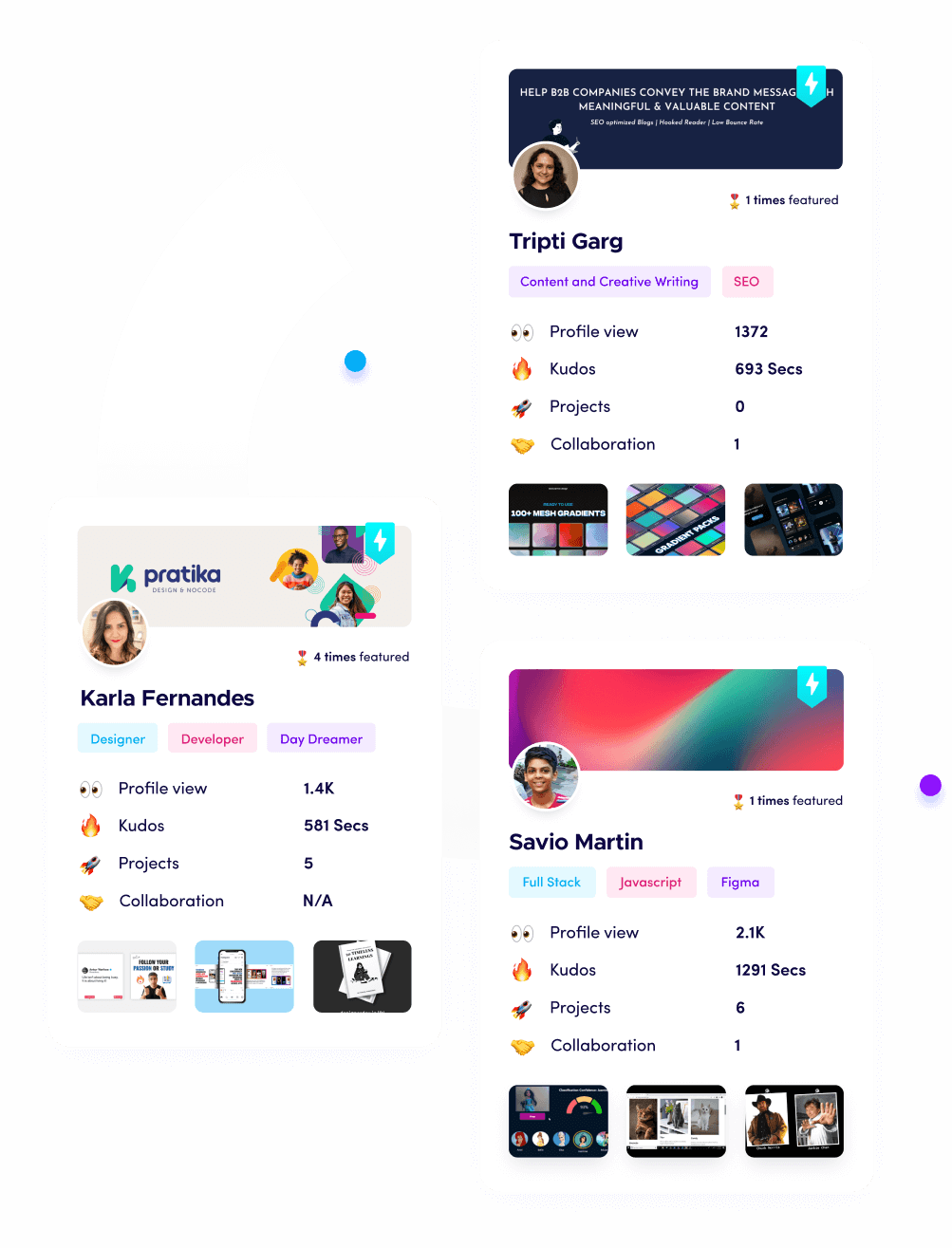Financial Copywriting Made Simple: A Practical Guide

Rahul
08 Jul, 2023

So you want to become a financial copywriter and make a living writing persuasive sales copy for banks, investment firms, and financial advisors.
Great choice!
Financial copywriting is a lucrative and fast-growing field. The good news is, you don’t need a finance degree or years of experience to get started. All you need are some fundamental skills that anyone can develop with practice.
In this guide, I’ll walk you through the basics of financial copywriting and show you how to craft compelling copy that converts readers into customers. You’ll learn the psychology behind why people buy financial products and how to tap into that. I’ll give you templates, formulas, and examples you can model. By the end, you’ll be writing financial copy that sells.
Don't know what is copywriting? Read our complete guide to copywriting.
What Exactly Is Financial Copywriting?
So, what exactly is financial copywriting? In simple terms, it’s writing that aims to motivate people to take action with their money or make financial decisions. Things like:
- Sales letters
- Email marketing campaigns
- Landing pages
- Ad copy
- Blog posts
The goal is to educate and persuade your audience in a friendly, relatable way. Unlike technical writing which focuses on explaining complex topics, financial copywriting should inspire and move readers to make a change.
You want to write like you’re talking to a friend over coffee. Share stories and examples from your own life to build trust and help readers visualize how your solution or product could work for them. Explain financial concepts in a simple, easy-to-understand manner without too much jargon.
For example, instead of “asset allocation”, say “how you split up your money between different investments like stocks, bonds, and cash”.
Focus on the benefits and outcomes rather than features. Tap into the emotions that drive financial decisions like security, freedom, and leaving a legacy.
At the end of the day, effective financial copywriting comes down to understanding your audience and what motivates them. Do your research, speak their language, and give clear calls to action to help them take that next step. Keep practicing and studying examples from top copywriters.
Why Is Financial Copywriting Important?
Why is financial copywriting so important? Simply put, it helps businesses make more money. Strong sales copy translates to higher conversion rates, more leads, and bigger profits.
As a financial copywriter, your job is to convince readers to take action, whether that's signing up for a webinar, requesting a free trial, or purchasing a product. You need to clearly and persuasively communicate the benefits and value to the reader.
How do you do this? Focus on the problems you're solving and how you solve them. Use an empathetic and helpful tone. Explain things in a simple, easy-to-understand way using examples and stories. Build trust and authority through social proof like testimonials, case studies, media mentions or partnerships.
A good financial copywriter understands the target audience and speaks their language. You know what motivates them and craft copy that taps into those motivations. You're able to take complex ideas and break them down into digestible pieces, all while maintaining a conversational flow.
Strong calls to action are also key. Tell the reader exactly what you want them to do and why they should do it now. Use urgency and scarcity to encourage fast action.
At the end of the day, financial copywriting comes down to understanding human psychology and using the power of words and emotion to drive conversions and sales. When done well, it can have an incredible impact on a company's bottom line and long-term success. The ability to craft persuasive copy is an invaluable skill that fuels many careers and businesses.
Know Your Audience Inside and Out
To craft effective financial copy, you need to know your target audience inside and out. Who are these people? What do they care about? What challenges or pain points do they have that you can address?
The more specific you can get about your audience, the better. Are they business owners? Retirees? Parents saving for college? Identify their key demographics like age, location, and income level. Figure out where they spend their time online and what they read. The deeper your understanding, the more you can tailor your message to really resonate with them.
For example, if you're writing for retirees, emphasize things like financial security, nest eggs, and leaving a legacy. For young families, focus on topics like saving for college, budgeting, and teaching kids financial literacy. Business owners may be motivated by increasing revenue, reducing costs, and gaining an edge over competitors.
Do Your Research
Spend time researching your audience’s key interests and concerns. Read the publications they follow and see what kinds of financial content they share or comment on. Look for the questions they frequently ask in online communities. The answers are goldmines for article and email ideas.
See if you can find any surveys or studies on their financial attitudes and behaviors. For example, "a study may show that 60% of millennials want to learn how to invest in the stock market or that the #1 concern for baby boomers is outliving their retirement savings." This kind of data can give you invaluable insight into what really matters to them.
Speak Their Language
Learn to speak your audience’s language by studying the words and phrases they use to talk about money and related topics. Then incorporate that language into your own copy to make an instant connection. They’ll feel like you “get” them because you're using familiar terms they identify with.
With a little detective work, you can gain the clarity and insight needed to produce financial copy that truly resonates with your target audience. And that is the real key to success.
Keep It Simple and Personal
When it comes to financial copywriting, keeping things simple and personal is key. As a copywriter, your goal is to connect with your reader and build trust. The more complex and technical you get, the more you risk losing them.
So how do you keep financial copywriting simple and personal? Here are a few tips:
- Use simple language. Write in a conversational tone using words and phrases your reader will understand. Avoid
- industry jargon and technical terms whenever possible. If you do need to use a technical term, be sure to briefly define or explain it.
- Share relatable examples. Use real-world examples and stories to help explain financial concepts and services in a simple, easy-to-understand way. Help the reader see how it relates to them.
- Use “you” and “your.” Referring to the reader in a personal way helps to build a connection with them. Say “you” instead of “the customer” or “investors.”
- Highlight benefits. Keep the focus on the key benefits to the reader. Explain how the financial product or service can help them save money, make money, reduce risk, save time, gain peace of mind, or whatever the main benefits are.
- Use subheadings. Breaking up long copy into shorter sections with subheadings not only makes the overall piece easier to read, but it highlights important points and benefits at a glance.
- Ask questions. Pose questions the reader may have about the topic and then provide helpful answers and information. This helps to engage the reader by addressing their natural curiosity.
- Review and edit. Go back over your draft financial copy with the goal of simplifying and personalizing it as much as possible. Look for any spots that could be confusing or seem impersonal and revise them. Get feedback from others as well.
Keeping your financial copywriting simple, relatable and focused on the benefits and solutions to the reader will help build trust in your content and motivate them to take action. Write as if speaking directly to a friend, and your message will come through loud and clear.
Share Relevant Stories and Examples
Financial copywriting is all about using the power of words to sell financial products and services. As a copywriter, your job is to craft persuasive messages that convince readers to take action.
The key to effective financial copywriting is making a human connection.
One of the best ways to make a human connection is by sharing relevant stories and examples.
For example, instead of just listing the features and benefits of a new investment product, share the story of another customer who invested in it. Explain their situation, their concerns, and how the product helped address those concerns. This helps the reader see how the product could benefit them in a very real way.
You might share an example like this:
"Riten was worried about saving enough for retirement. At 55, he had only accumulated $75,000 in his 401(k). He knew he needed a way to ramp up returns quickly. After meeting with his financial advisor, he invested $50,000 of his savings in the Alpha Growth Fund. Thanks to the fund's track record of beating the market average by 5% annually over the past decade, Riten's investment grew to over $200,000 in just 7 years. Now at 62, Riten feels confident he can retire comfortably next year."
Stories like this speak to the reader on an emotional level. They cut through skepticism and help the reader visualize the possibility of achieving their own financial goals.
Always choose examples and stories that are relevant for your target audience and the specific product or service you're writing about. Keep them concise while highlighting the key benefits and results.
Using this technique, you can craft financial copy that inspires action by appealing to your reader's hopes, dreams, and desire for financial freedom or security. Combine that with a solid pitch on the merits and features of what you're selling, and you'll have a copy that persuades and converts.
Focus on the Benefits, Not Just Features
Copywriting, especially in the finance niche, can be very lucrative. However, it does require some skills and knowledge to become proficient. One of the most important things to focus on is highlighting the benefits of a product or service, not just the features.
Features vs. Benefits
Features describe what something is or does. Benefits describe how it helps the customer. As a financial copywriter, your job is to sell the benefits. For example, a feature of a high-yield savings account may be a 2% APY. The benefit is that the customer can earn more interest on their money. Similarly, in the life settlement market, the feature might be a policy's cash surrender value, but the benefit is immediate liquidity for medical expenses or retirement needs See the difference?
When writing copy, spend the majority of your time discussing the benefits. Use features to support the key benefits, but don’t make features the focus. Readers care more about what’s in it for them than a list of specifications.
Some examples of financial product benefits:
- Earn a higher return on your investment.
- Pay off debt faster and save money.
- Secure your family’s financial future.
- Access your money when you need it without penalty.
You get the idea. Think about why someone would want to open an account or use the product. What will it allow them to achieve or avoid? Focus on those motivations and outcomes.
Using a benefit-driven approach in your writing will make for much more compelling copy. Compare these two examples:
- Feature-focused: “This high-yield savings account offers up to a 2% APY, $0 minimum balance, and free ATM withdrawals.”
- Benefit-focused: “This high-yield savings account lets you earn 2X more interest than a standard savings account so your money can work harder for you. No minimums, no fees - just a smart, easy way to save.”
- The second one sells the key benefit (earn more interest) and overall value (easy way to save) much better, even with fewer words. And that's the power of benefit-driven copy.
So keep your readers and their desires in mind.
Focus on why they would benefit from the product or service and build your copy around those benefits.
Use an Educational and Helpful Tone
When writing financial copy, using an educational and helpful tone is key to connecting with your readers. Think of yourself as a mentor guiding clients to make better financial decisions.
1. Explain concepts clearly
Avoid industry jargon and explain financial topics in simple terms your readers can understand. For example, instead of “asset allocation”, say “how you spread your money across different investment options.” Provide concrete examples to illustrate your points.
2. Share your expertise
While being conversational, establish yourself as a knowledgeable guide. Say things like “Here are some tips I’ve learned over the years...” or “Based on my experience helping others...” Then provide genuinely useful advice and strategies. Keep an authoritative yet friendly tone.
3. Use “you” and “we”
Refer to the reader as “you” to make a personal connection. Say “we” when suggesting something the reader can do as if you're working through it together. For example, “Here are a few ways we can reduce your expenses...” This inclusive language helps build trust in your guidance.
4. Suggest helpful resources
Point readers to useful tools, resources and further reading on the topics you discuss. For example, you might say something like: “I highly recommend using a compound interest calculator like this one to see how your money can grow over time.” Providing links to related resources shows you want readers to help more.
5. Use an uplifting and encouraging tone
While being realistic, maintain an optimistic tone that inspires and motivates readers. Congratulate them on their financial wins, big and small. Cheer them on through setbacks. Your positive and encouraging words can help keep them engaged and committed to their financial well-being.
Following these tips will help you craft financial copy that sounds like helpful advice from a trusted friend. Educating readers and providing useful guidance in an upbeat, inclusive tone is key to keeping them engaged and coming back for more of your expertise. Focusing on the reader’s needs and success will build that connection that inspires action.
Optimize for Search Engines by Using Keywords
To optimize your financial copy for search engines, you need to incorporate important keywords and key phrases throughout your content. Think of the words and phrases that your target audience might search for to find information related to your offer or service.
Keywords
Keywords are the specific words or short phrases that searchers enter into engines like Google to find relevant content. For financial copywriting, focus on terms like:
- Investing
- Retirement planning
- Financial advice
- Wealth management
- Stock broker
Use these keywords in your page titles, URLs, headers, and content. But don't overdo it, or it will seem spammy to readers and search engines. A good rule of thumb is to use each major keyword 2-3 times for every 200 words of copy.
Synonyms and Related Terms
To improve your rankings and capture more search traffic, include synonyms and related terms for your main keywords. For example, use:
- Investing → trading, portfolio management
- Retirement planning → pension planning, nest egg strategies
- Financial advice → money tips, wealth coaching
- Wealth management → asset allocation, investment consulting
Using related terms helps search engines understand your content focuses on multiple facets of a topic. This signals to Google your page is highly relevant and should rank well.
LSI Keywords
Latent semantic indexing or LSI keywords take keyword optimization to the next level. These are terms that are semantically related to your main keywords. For example, LSI keywords for "financial advice" could be:
- Financial planning
- Investment strategies
- Money management
- Financial literacy
Including LSI keywords throughout your copy, especially in headings, helps search engines grasp the conceptual meaning and overall topic of your content.
Optimizing for search engines takes work, but following these tips will help boost your rankings and bring more of your target audience to your financial copy. Focus on using keywords, synonyms, and semantic terms naturally throughout your copy, and you'll master the search engine optimization game.
Conclusion
So there you have it, a practical guide to getting started with financial copywriting.
While it may seem complex, by focusing on understanding your audience, crafting a compelling message, and using simple yet persuasive language, you'll be writing like a pro in no time.
Start small if you need to, maybe with a sales page for your own product or service. Polish your skills and build up your confidence. The opportunities are endless if you work hard and continue improving your craft.
Now go make some money with your words.
Some Resources to help:
- 9 Financial Copywriting Examples - LinkedIn Pulse
- 7 Great Examples of Financial Copywriting - SemRush
- Top Financial Copywriting Examples From Fintechs

